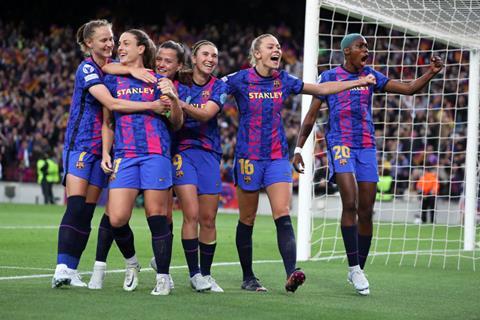Molly Towers Mode, account director at EssenceMediacom, looks at the disparity in attention given to women’s sport when compared to men’s

With the Women’s Football World Cup kick-off fast approaching, the conversation around the need for equality in sports is ramping up.
It is no secret that women’s sport lags far behind men’s across a host of issues – broadcast coverage, equal pay, brand investment and tackling sexism - to name a few.
The equal pay act was passed over 50 years ago in the UK, but the sports industry has taken a long time to catch up. The Football Association of Wales only agreed an equal pay deal for their senior male and female teams in January of this year, following the same decision taken for the England players in 2020.
Pay discrepancies remain vast. When comparing the average salary for a male and female football player in the top tier, Women’s Super League players see around just 1% of that of Premier League players.
UK consumers are noticing these inequalities. 57% of UK consumers believe there is inequality in media coverage, and 55% believe there is inequality in athlete salaries/winnings.
Audiences want more coverage
Audiences are hungry for more. Since record-breaking numbers tuned in to watch the Lionesses’ victory over Germany last summer, 27% of those went on to watch other women’s competitions such as The Hundred and WSL. The Euro 22 final saw a similar turn of events, attracting 15.8 million new viewers to women’s sports and spurring on a halo effect on broader female sports viewership.
Despite this uncovered success, in 2021, less than 6% of global sports coverage was dedicated to women’s sports - failing to align with demand from 56% of UK consumers open to watching more women’s sports if it was on TV.
Brand investment still lags behind
Brand investment into female sports also lags significantly behind, but the numbers don’t add up.
The Euro’s 2022 final attracted a record-breaking global audience of 365 million people and was the third biggest TV event in 2022, but sponsorship for the tournament is estimated by the industry to have been between £750k-£1 million in the UK. To put this into perspective, the UK TV audience reached 17.4 million, a greater TV audience than the finals of Love Island (3.4 million), Britain’s Got Talent (7.07 million), and I’m a Celebrity (7.1 million) combined according to BARB.
This is where brands can make a difference. By investing ahead of the rest in women’s sports, and championing female athletes, they can shape the change already starting to happen.
The case for equality
Not only is it morally imperative to drive equality for all, but this will result in positive business outcomes too. A report by McKinsey found that $12 trillion (£9.37 trillion) could be added to global GDP by advancing women’s equality in all sectors.
Women’s sports fans are a lucrative audience. Over three quarters (76%) notice brands when watching sports events, compared to 44% of men’s sports fans. This equates to a quarter more women’s sports fans being likely to make a purchase from a brand sponsoring their favourite sport.
There are many benefits that brands could take advantage of when looking at the audiences of women’s sports compared to male sports. Not only did a recent report find that 68% of male football fans are overtly misogynistic, but a Nielsen study revealed women’s sports are more progressive, family-orientated, inspiring, and less money-driven than male sports.
It is also a misconception that women’s sports fans are predominantly female. Over half (54%) of the TV viewers of women’s sports in 2022 were male, demonstrating that the audiences are mainstream and offer a completely viable alternative to male sports audiences.
A call to arms
The Lionesses winning the Euro’s last year was a watershed moment in the sporting world and beyond. Women’s sports are now firmly on the agenda, and viewing figures are continuing to grow.
Brands that get in early and demonstrate authentic, lasting support across the female sporting landscape are most likely to succeed. Brands that don’t are in danger of being left behind.

Molly Towers Mode is an account director at EssenceMediacom





No comments yet